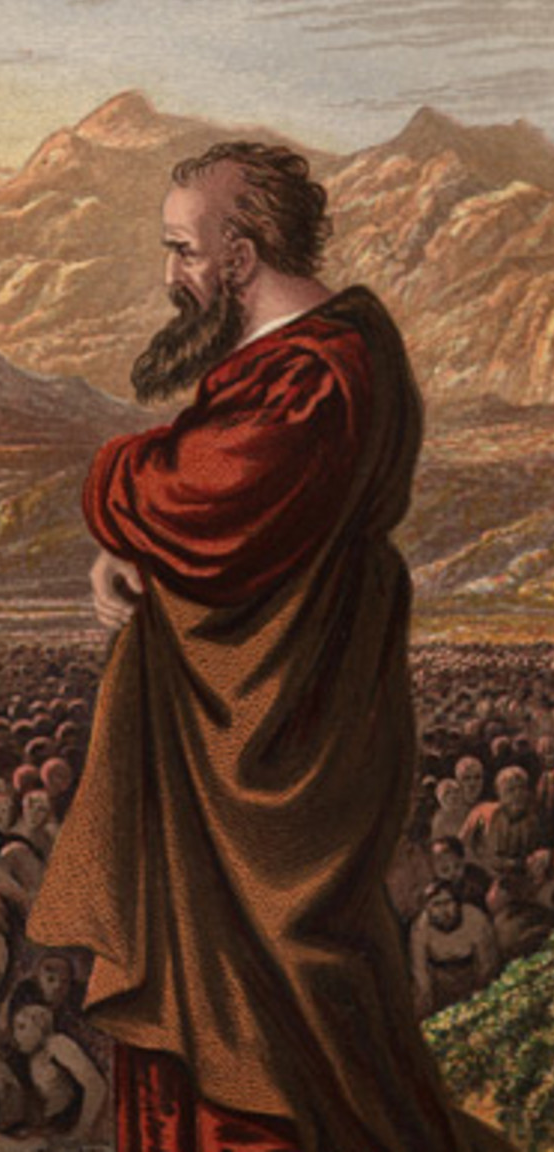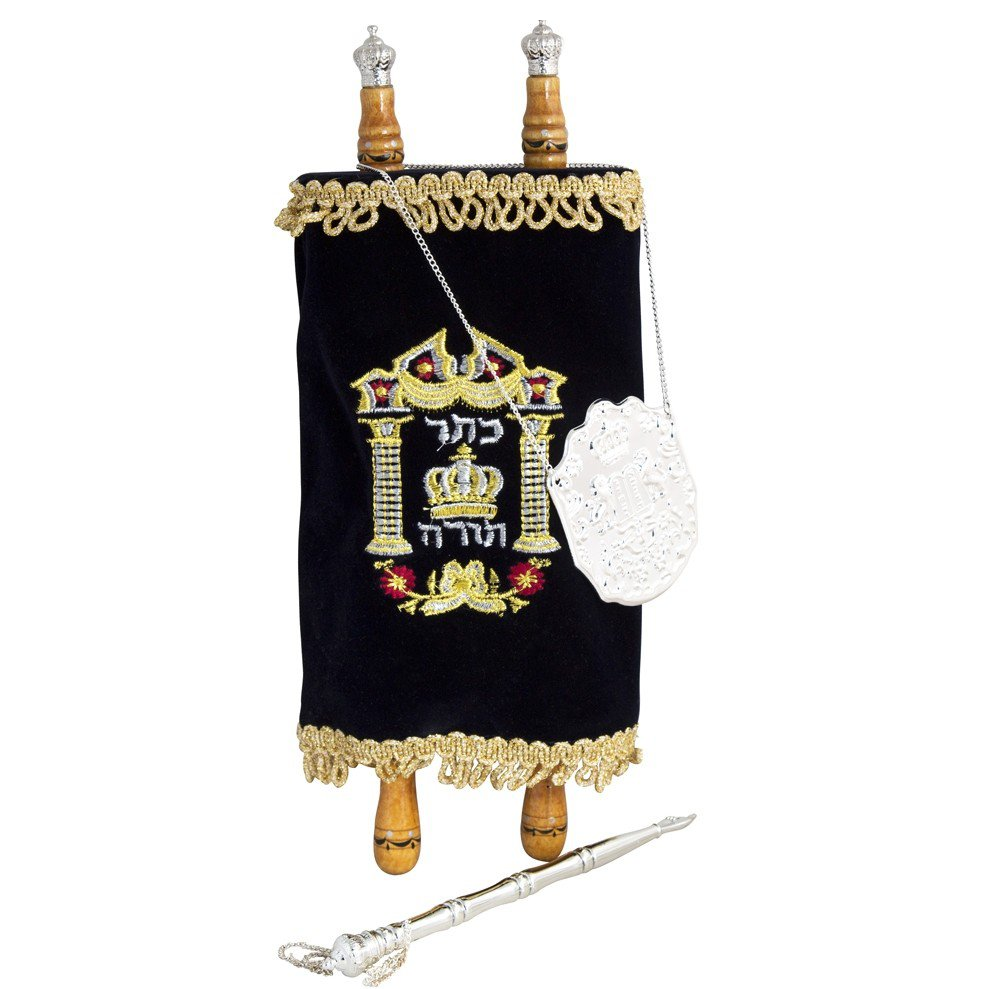|
Weekly Parashah |
|||||
| Torah: Genesis 44 : 18 – 47 : 27 | Haftara: Eze. 37:15–28 | Brit Chadashah: Jn. 5:1–47 Matt. 1:18-2:12 Luke 1:16-2:20 |
|||
| Vayigash (and he drew near) וַיִּגַּשׁ |
|||||
Scripture: |
Genesis 44 : 18 – 47 : 27 |
Torah |
|||
|
|
Judah Pleads for Benjamin18 Then Judah approached him and said, “I beg your pardon, my lord. Please let your servant say a word in my lord’s ears, and don’t be angry with your servant, since you are like Pharaoh. 19 My lord asked his servants saying, ‘Do you have a father or a brother?’ 20 So we said to my lord, ‘We have a father who is old, a child born to him of his old age is young. Now his brother is dead, so he is the only one of his mother’s children left, and his father loves him.’ 21 Then you said to your servants, ‘Bring him down to me so that I can look at him.’ 22 But we said to my lord, ‘The boy cannot leave his father. If he were to leave his father, he would die.’ 23 Then you said to your servants, ‘Unless your youngest brother comes down with you, you won’t see my face again.’ https://www.biblegateway.com/passage/?search=Gen.+44%3A18%E2%80%9347%3A27&version=TLV |
||||
Scripture: |
Ezekiel 37:15–28 |
Haftarah |
|||
Reunification of Southern and Northern Kingdoms15 The word of Adonai came to me saying: 16 “You, son of man, take one stick and write on it, ‘For Judah’—for Bnei-Yisrael joined with him. Then take another stick and write on it, ‘For Joseph’—the stick of Ephraim and all the house of Israel joined with him. 17 Join them one to another for yourself, as one stick, so they may become one in your hand. https://www.biblegateway.com/passage/?search=Eze.+37%3A15%E2%80%9328&version=TLV |
 |
||||
Scripture: |
Jn. 5:1–47
|
Brit Chadashah |
|||
|
|
5 After this there was a Jewish feast, and Yeshua went up to Jerusalem. 2 Now in Jerusalem there is a pool by the sheep gate, called Bethzatha in Aramaic,[a] which has five porches. 3 In these a crowd of invalids was lying around—blind, lame, disabled. (4 )[b] https://www.biblegateway.com/passage/?search=Jn.+5%3A1%E2%80%9347&version=TLV Matthew 1 : 18 – 2 : 12The Miraculous Birth of Yeshua18 Now the birth of Yeshua the Messiah happened this way. When His mother Miriam was engaged to Joseph but before they came together, she was found to be pregnant through the Ruach ha-Kodesh. 19 And Joseph her husband, being a righteous man and not wanting to disgrace her publicly, made up his mind to dismiss her secretly. 20 But while he considered these things, behold, an angel of Adonai appeared to him in a dream, saying, “Joseph son of David, do not be afraid to take Miriam as your wife, for the Child conceived in her is from the Ruach ha-Kodesh. 21 She will give birth to a son; and you shall call His name Yeshua, for He will save His people from their sins.”22 Now all this took place to fulfill what was spoken by Adonai through the prophet, saying, 23 “Behold, the virgin shall conceive and give birth to a son, and they shall call His name Immanuel,” which means “God with us.”[a]24 When Joseph woke up from his sleep, he did as the angel of Adonai commanded him and took Miriam as his wife. 25 But he did not know her intimately until she had given birth to a Son. And he called His name Yeshua. Wise Men Follow His Star2 Now after Yeshua was born in Bethlehem of Judea, in the days of King Herod, magi from the east came to Jerusalem, 2 saying, “Where is the One who has been born King of the Jews? For we saw His star in the east and have come to worship Him.”[b] https://www.biblegateway.com/passage/?search=Matt.+1%3A18-2%3A12&version=TLV Luke 1 : 16 – 2 : 2016 Many of Bnei-Yisrael will turn to Adonai their God. 17 And he will go before Him in the spirit and power of Elijah, to turn the hearts of fathers to the children[a] and the disobedient ones to the wisdom of the righteous, to make ready for Adonai a prepared people.18 Zechariah said to the angel, “How will I know this for certain? I’m an old man, and my wife is well-advanced in age.”19 And speaking to him, the angel declared, “I am Gabriel, the one standing in God’s presence. I was commissioned to tell you and proclaim to you this good news. 20 So look, you will be silent and powerless to speak until the day these things happen, since you did not believe my words which will be fulfilled in their time.” 21 The people were waiting for Zechariah and wondering about his long delay in the Holy Place. 22 But when he came out, he couldn’t speak to them. Then they realized that he had seen a vision in the Holy Place. He was making signs to them but remained mute. 23 When the days of his priestly service had been completed, he went home. 24 After these days, his wife Elizabeth became pregnant and hid herself for five months, saying, 25 “Adonai has done this for me! In these days He looked upon me, to take away my disgrace among the people.”[b] Prophecy of Birth to the Virgin26 Then in the sixth month, the angel Gabriel was sent by Adonai into a town in the Galilee named Natzeret 27 and to a virgin engaged to a man named Joseph, of the house of David. The virgin’s name was Miriam. 28 And coming to her, the angel said, “Shalom, favored one! Adonai is with you. https://www.biblegateway.com/passage/?search=Luke+1%3A16-2%3A20&version=TLV |
||||
Parashah in 60 seconds |
|||||
Music Styles Black Gospel
Styles
On this radio station you will find the following music styles;
Gospel (black gospel as not southern gospel)
Gospel music is a music genre in Christian music. The creation, performance, significance, and even the definition of gospel music varies according to culture and social context. Gospel music is composed and performed for many purposes, including aesthetic pleasure, religious or ceremonial purposes, and as an entertainment product for the marketplace. Gospel music usually has dominant vocals (often with strong use of harmony) with Christian lyrics. Gospel music can be traced to the early 17th century,[1] with roots in the black oral tradition. Hymns and sacred songs were repeated in a call and response fashion. Most of the churches relied on hand clapping and foot stomping as rhythmic accompaniment. Most of the singing was done a cappella.[2] The first published use of the term ″Gospel Song" probably appeared in 1874. The original gospel songs were written and composed by authors such as George F. Root, Philip Bliss, Charles H. Gabriel, William Howard Doane, and Fanny Crosby.[3] Gospel music publishing houses emerged. The advent of radio in the 1920s greatly increased the audience for gospel music. Following World War II, gospel music moved into major auditoriums, and gospel music concerts became quite elaborate.[4]
Gospel blues is a blues-based form of gospel music (a combination of blues guitar and evangelistic lyrics).
Style
Gospel music in general is characterized by dominant vocals (often with strong use of harmony) referencing lyrics of a Christian nature. Subgenres include contemporary gospel, urban contemporary gospel (sometimes referred to as "black gospel"). Several forms of gospel music utilize choirs, use piano or Hammond organ, tambourines, drums, bass guitar and, increasingly, electric guitar. In comparison with hymns, which are generally of a statelier measure, the gospel song is expected to have a refrain and often a more syncopated rhythm.
Several attempts have been made to describe the style of late 19th and early 20th century gospel songs in general. Christ-Janer said "the music was tuneful and easy to grasp ... rudimentary harmonies ... use of the chorus ... varied metric schemes ... motor rhythms were characteristic ... The device of letting the lower parts echo rhythmically a motive announced by the sopranos became a mannerism".[5]
Roots and background
Coming out of the African American religious experience, gospel music can be traced to the early 17th century.[1] Gospel music has roots in the black oral tradition, and typically utilizes a great deal of repetition. The repetition of the words allowed those who could not read the opportunity to participate in worship. During this time, hymns and sacred songs were lined and repeated in a call and response fashion, and the Negro spirituals and work songs emerged. Repetition and "call and response" are accepted elements in African music, designed to achieve an altered state of consciousness we sometimes refer to as "trance", and strengthen communal bonds.
Most of the churches relied on hand clapping and foot stomping as rhythmic accompaniment. There would be guitars and tambourines available every now and then, but not frequently. Church choirs became a norm only after emancipation. Most of the singing was done a cappella.[2]
20th century
The holiness-Pentecostal movement, or sanctified movement, appealed to people who were not attuned to the Europeanized version of black church music. Holiness worship has used any type of instrumentation that congregation members might bring in, from tambourines to electric guitars. Pentecostal churches readily adopted and contributed to the gospel music publications of the early 20th century. Late 20th-century musicians such as Elvis Presley, Jerry Lee Lewis, Mahalia Jackson, Andrae Crouch, and the Blackwood Brothers either were raised in a Pentecostal environment, or have acknowledged the influence of that tradition.[11]
The advent of radio in the 1920s greatly increased the audience for gospel music, and James D. Vaughan used radio as an integral part of his business model, which also included traveling quartets to publicize the gospel music books he published several times a year.[12] Virgil O. Stamps and Jesse R. Baxter studied Vaughan's business model and by the late 1920s were running heavy competition for Vaughan.[11] The 1920s also saw the marketing of gospel records by groups such as the Carter Family.
The first person to introduce the ragtime influence to gospel accompaniment as well as to play the piano on a gospel recording was Arizona Dranes.[13]
In African-American music, gospel quartets developed an a cappella style following the earlier success of the Fisk Jubilee Singers. The 1930s saw the Fairfield Four, the Dixie Hummingbirds, the Five Blind Boys of Mississippi, the Five Blind Boys of Alabama, The Soul Stirrers, the Swan Silvertones, the Charioteers, and the Golden Gate Quartet. Racism divided the nation, and this division did not skip the church. If during slavery blacks were treated as inferior inside the white churches, after emancipation they formed their own separate churches. The gospel groups which were very popular within the black community, were virtually unknown to the white community, though some in the white community began to follow them.[14] In addition to these high-profile quartets, there were many black gospel musicians performing in the 1920s and 30s, usually playing the guitar and singing in the streets of Southern cities. Famous among them were Blind Willie Johnson, Blind Joe Taggart and others.
In the 1930s, in Chicago, Thomas A. Dorsey (best known as author of the song "Precious Lord, Take My Hand"), who had spent the 1920s writing and performong secular blues music under the name "Georgia Tom", turned to gospel music, establishing a publishing house.[4] He had experienced many trials in his life,including the death of his pregnant wife. Thomas gained biblical knowledge from his father, who was a Baptist minister, and was taught to play piano by his mother. He started working with blues musicians when the family moved to Atlanta.[15] It has been said that 1930 was the year when modern gospel music began, because the National Baptist Convention first publicly endorsed the music at its 1930 meeting.[16] Dorsey was responsible for developing the musical careers of many African-American artists, such as Mahalia Jackson.[4]
Meanwhile, the radio continued to develop an audience for gospel music, a fact that was commemorated in Albert E. Brumley's 1937 song, "Turn Your Radio On" (which is still being published in gospel song books). In 1972, a recording of "Turn Your Radio On" by the Lewis Family was nominated for "Gospel Song of the Year" in the Gospel Music Association's Dove Awards.[17]
Following the Second World War, gospel music moved into major auditoriums, and gospel music concerts became quite elaborate.[4] In 1950, black gospel was featured at Carnegie Hall when Joe Bostic produced the Negro Gospel and Religious Music Festival. He repeated it the next year with an expanded list of performing artists, and in 1959 moved to Madison Square Garden.[18] Today, black gospel and white gospel are distinct genres, with distinct audiences.
Style
The secular version of this music is urban contemporary music, which is musically indistinguishable, but which takes non-religious subjects for its lyrical content.
Urban/contemporary gospel music is characterized by dominant vocals, usually performed by a soloist. Common instruments include drums, electric guitar, bass guitar, and keyboards.
The lyrics very often have an explicitly Christian nature, although "inspirational" songs feature lyrics that can be construed as secular in meaning. For example, a song about a father's love for his son may be interpreted as God the Father's love for God the Son, or as a human father's love for his human child. This lyrical ambiguity echoes the double-voicedness of 19th century spirituals, and may have musical crossover appeal to the larger secular market (Darden 2004:79-80). Common themes include hope, deliverance, love, and healing (Waldron 2006).
In comparison with traditional hymns, which are generally of a statelier measure, gospel songs are expected to have a refrain and a pronounced beat with a syncopated rhythm. Compared to modern praise and worship music, urban/contemporary gospel typically has a faster tempo and more emphasis on the performer. Like traditional black gospel music, the performer's emotional connection to the audience and the lyrical content of the song is valued highly.
The genre includes Christian hip hop (sometimes called "Christian rap"), Which is described in a separate link on this site.










